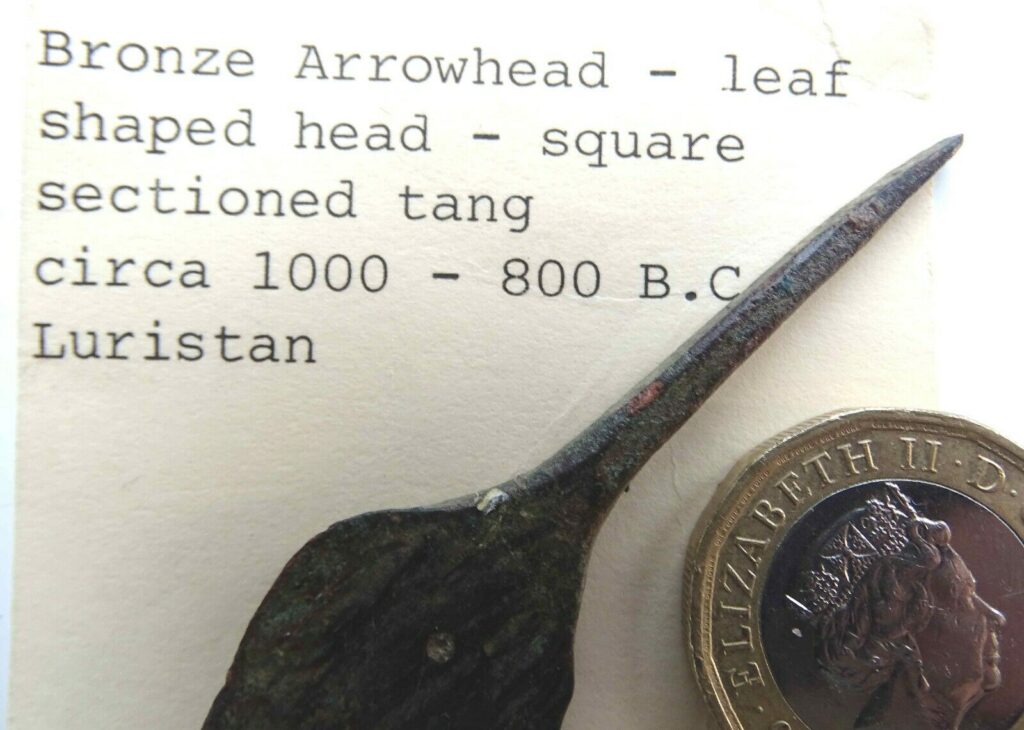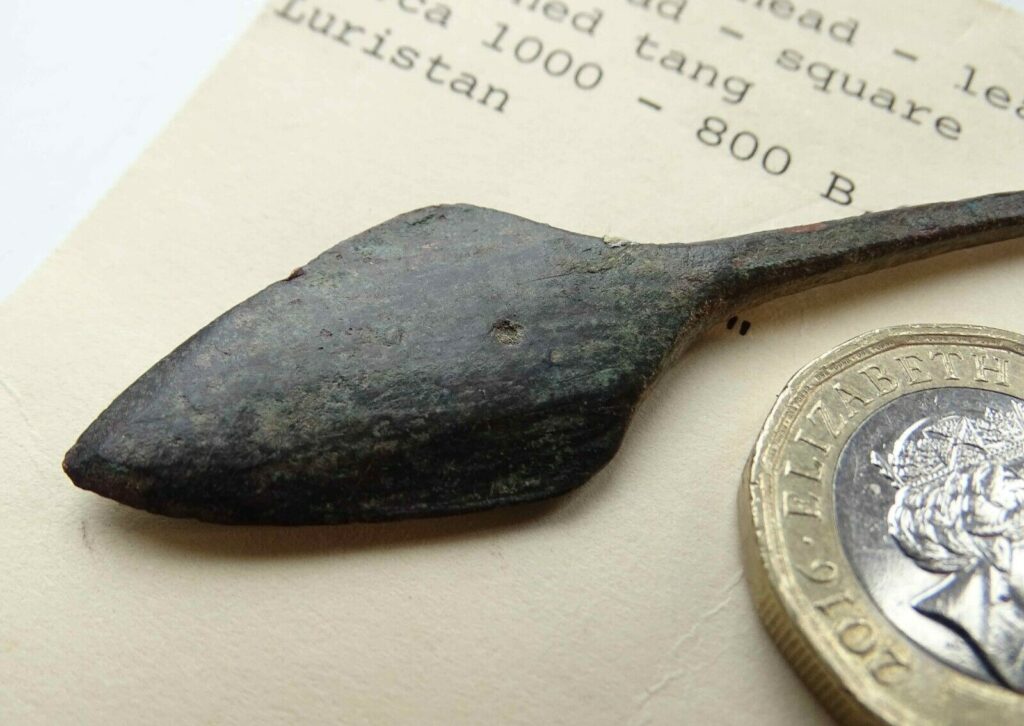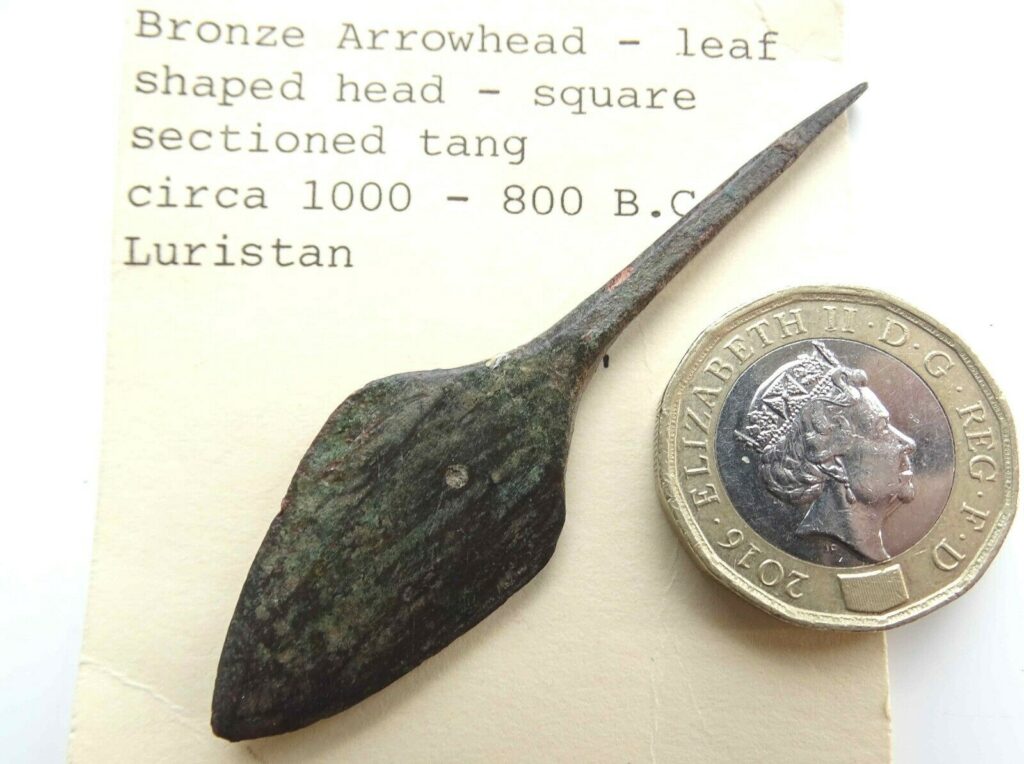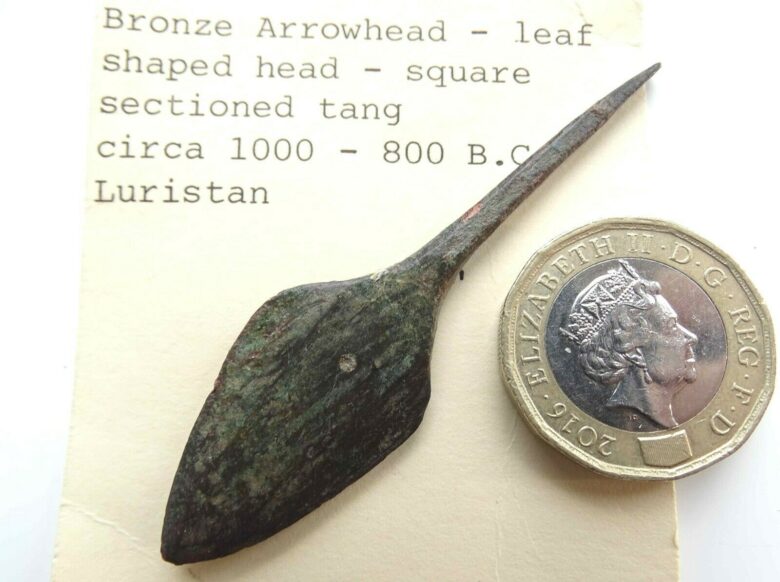Luristan Bronze Age Arrowhead – Leaf shaped head – Square sectioned tang.
1000 BCE – 800 BCE
Measures 64mm
Weight 9g
Bronze Age
The Bronze Age is a prehistoric period that was characterised by the use of bronze, in some areas proto-writing, and other early features of urban civilisation. The Bronze Age is the second principal period of the three-age Stone-Bronze-Iron system, as proposed in modern times by Christian Jürgensen Thomsen, for classifying and studying ancient societies.
An ancient civilisation is defined to be in the Bronze Age either by producing bronze by smelting its own copper and alloying with tin, arsenic, or other metals, or by trading for bronze from production areas elsewhere. Bronze is harder and more durable than other metals available at the time, allowing Bronze Age civilisation’s to gain a technological advantage.
Luristan Bronze
Luristan Bronze, Luristan also spelled Lorestān, any of the horse trappings, utensils, weapons, jewelry, belt buckles, and ritual and votive objects of bronze probably dating from roughly 1500–500 BCE that have been excavated since the late 1920s in the Harsin, Khorramābād, and Alishtar valleys of the Zagros Mountains in the Lorestān region of western Iran. Their precise origin is unknown. Scholars believe that they were created either by the Cimmerians, a nomadic people from southern Russia who may have invaded Iran in the 8th century BCE, or by such related Indo-European peoples as the early Medes and Persians.

BRONZE AGE ARROWHEAD 
BRONZE AGE ARROWHEAD 
BRONZE AGE ARROWHEAD 
BRONZE AGE ARROWHEAD

